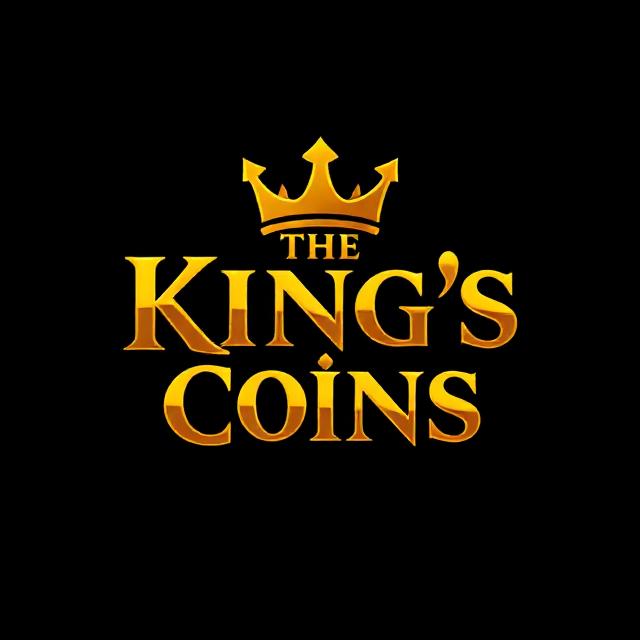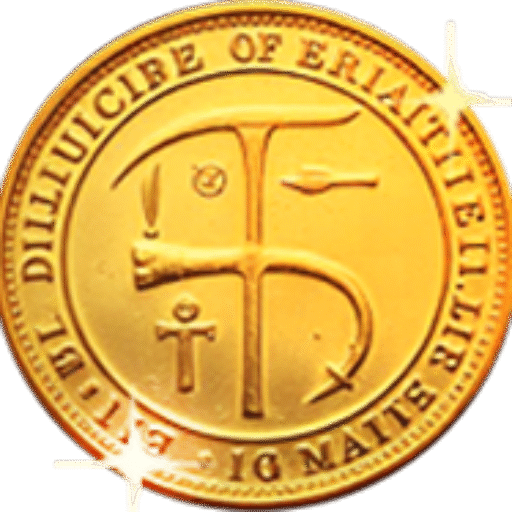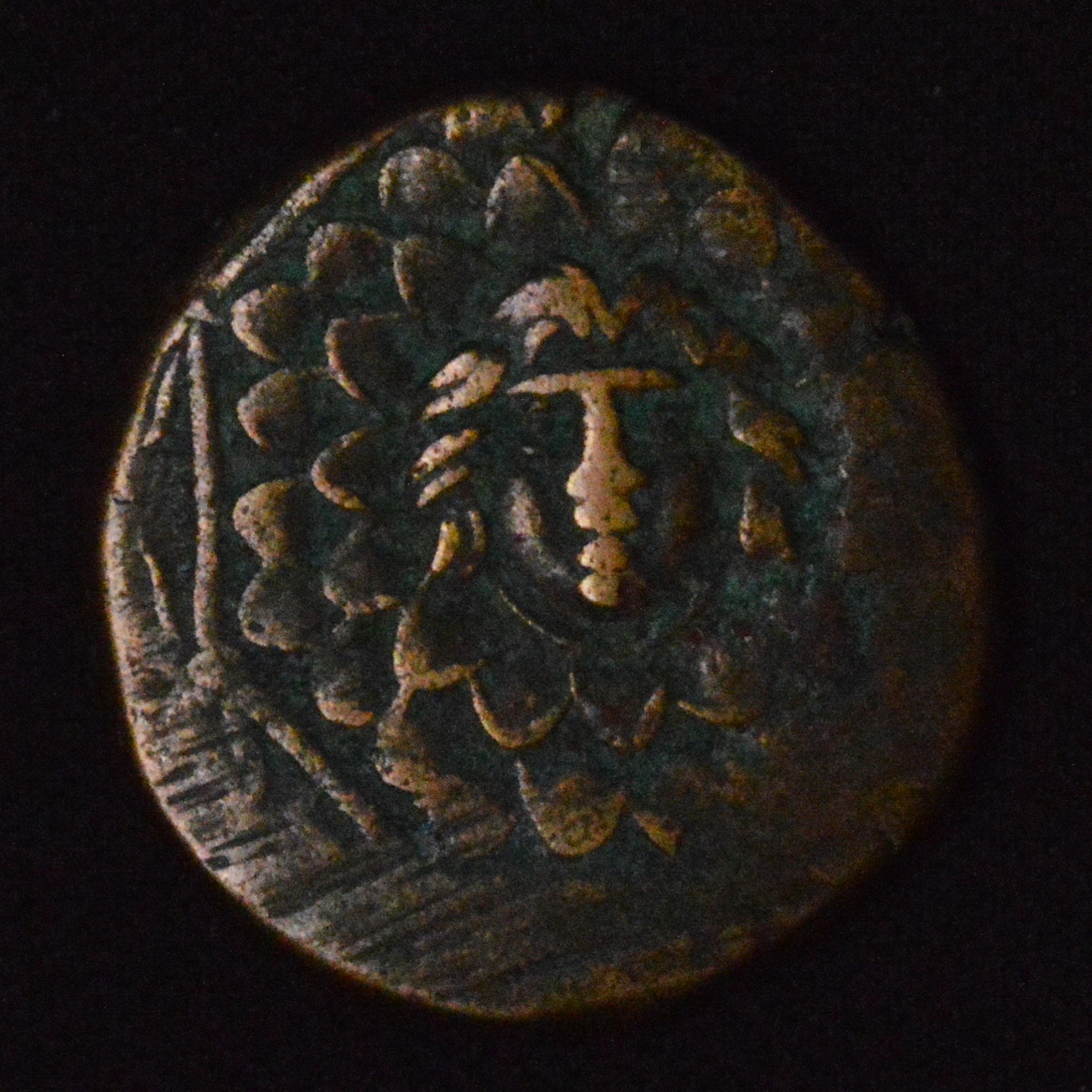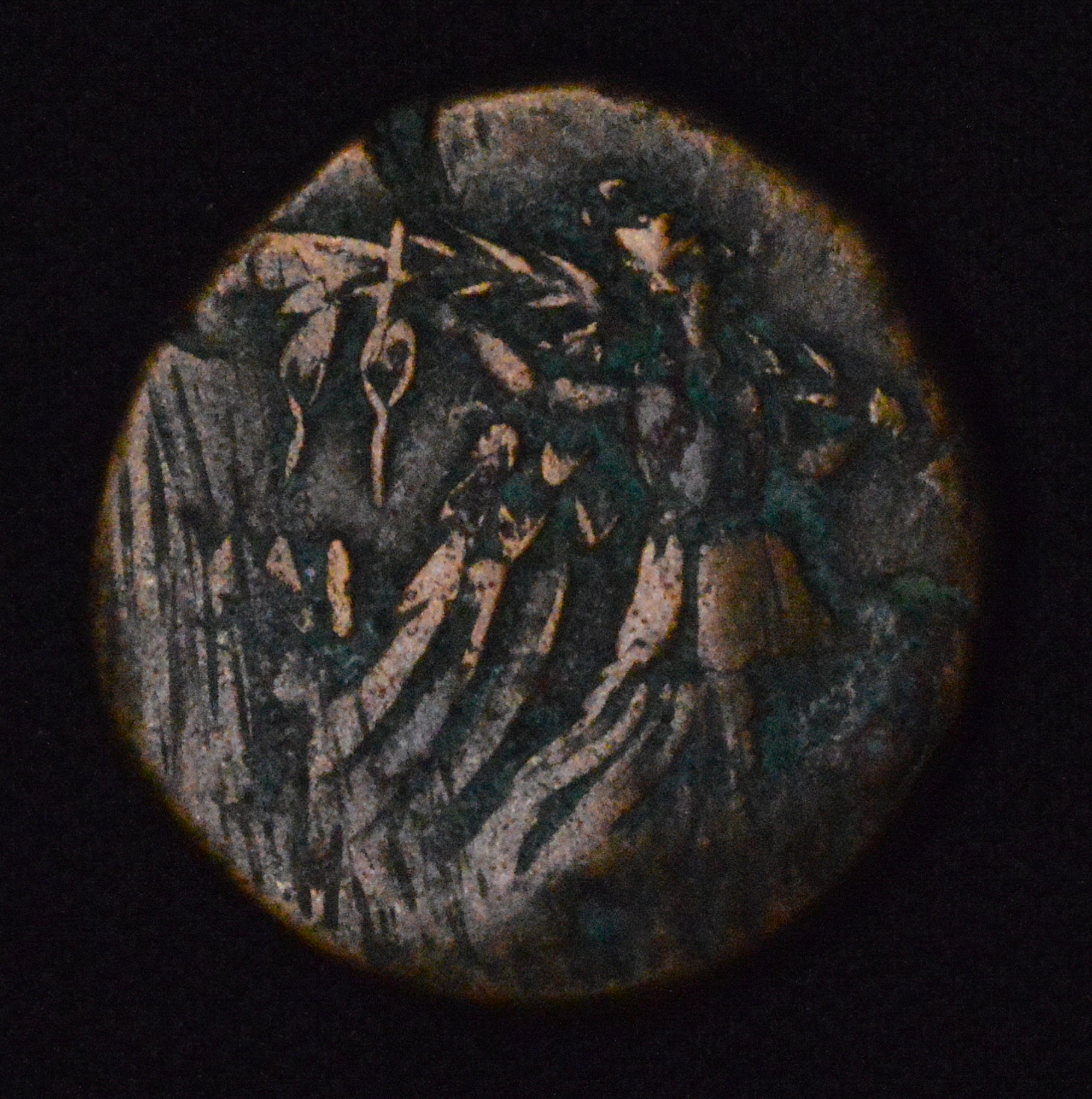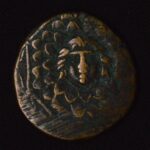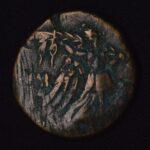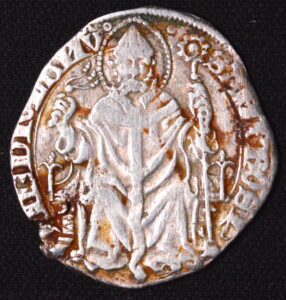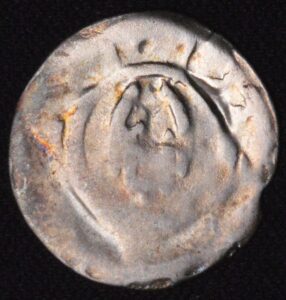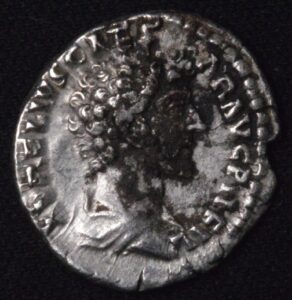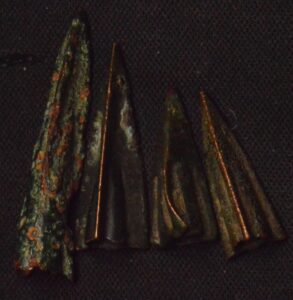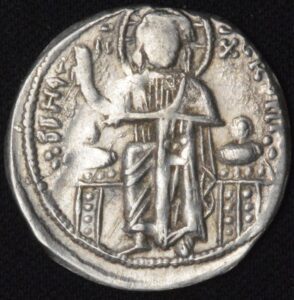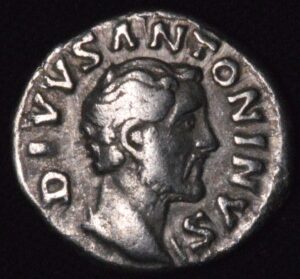Description
The Ancient Greek Pontos Gorgo Mesua AE coin is a bronze coin from the Pontic Kingdom, which was established along the southern coast of the Black Sea in what is now northern Turkey. It dates from approximately the late Hellenistic period, around the 2nd to 1st centuries BCE, under rulers such as Mithridates VI Eupator. The obverse of these coins typically features a Gorgon head, often identified as Medusa, with serpentine hair symbolizing protection and warding off evil, a common motif in Greek art and coinage.
The reverse side frequently shows the winged goddess Nike holding a wreath and palm branch, symbolizing victory and peace. This imagery reflected the Pontic Kingdom’s aspirations for strength and triumph in its interactions with neighboring states and Rome, a kingdom known for its military power and cultural syncretism.
These AE (bronze) coins vary in size and denomination but are generally well-preserved examples of Hellenistic provincial coinage. Collectors value Pontos Gorgon coins for their artistic detail and historical context, especially those struck under the rule of Mithridates VI, a prominent and controversial figure known for his resistance against Rome. The combination of the fearsome Gorgon and victorious Nike makes these coins visually striking and historically significant.
Numismatic sales listings for such coins often describe them as “Gorgo-Medusa” AE coins from Pontos or Amisos, highlighting their ancient origins and condition, which can range from fine to very fine or better. They hold appeal not only to collectors of Greek coins but also enthusiasts of ancient history focusing on the Black Sea region and Hellenistic kingdoms.
In summary, the Ancient Greek Pontos Gorgo Mesua AE coin is a bronze coin featuring the Gorgon head on the obverse and Nike on the reverse, minted during the Hellenistic period under the Pontic Kingdom. It is a valued collectible reflecting the cultural and political life of an important ancient Black Sea Greek state.
The Ancient Greek Pontos Gorgo Mesua AE coin is a bronze coin from the Pontic Kingdom, which was established along the southern coast of the Black Sea in what is now northern Turkey. It dates from approximately the late Hellenistic period, around the 2nd to 1st centuries BCE, under rulers such as Mithridates VI Eupator. The obverse of these coins typically features a Gorgon head, often identified as Medusa, with serpentine hair symbolizing protection and warding off evil, a common motif in Greek art and coinage.
The reverse side frequently shows the winged goddess Nike holding a wreath and palm branch, symbolizing victory and peace. This imagery reflected the Pontic Kingdom’s aspirations for strength and triumph in its interactions with neighboring states and Rome, a kingdom known for its military power and cultural syncretism.
These AE (bronze) coins vary in size and denomination but are generally well-preserved examples of Hellenistic provincial coinage. Collectors value Pontos Gorgon coins for their artistic detail and historical context, especially those struck under the rule of Mithridates VI, a prominent and controversial figure known for his resistance against Rome. The combination of the fearsome Gorgon and victorious Nike makes these coins visually striking and historically significant.
Numismatic sales listings for such coins often describe them as “Gorgo-Medusa” AE coins from Pontos or Amisos, highlighting their ancient origins and condition, which can range from fine to very fine or better. They hold appeal not only to collectors of Greek coins but also enthusiasts of ancient history focusing on the Black Sea region and Hellenistic kingdoms.
In summary, the Ancient Greek Pontos Gorgo Mesua AE coin is a bronze coin featuring the Gorgon head on the obverse and Nike on the reverse, minted during the Hellenistic period under the Pontic Kingdom. It is a valued collectible reflecting the cultural and political life of an important ancient Black Sea Greek state.
The Ancient Greek Pontos Gorgo Mesua AE coin is a bronze coin from the Pontic Kingdom, which was established along the southern coast of the Black Sea in what is now northern Turkey. It dates from approximately the late Hellenistic period, around the 2nd to 1st centuries BCE, under rulers such as Mithridates VI Eupator. The obverse of these coins typically features a Gorgon head, often identified as Medusa, with serpentine hair symbolizing protection and warding off evil, a common motif in Greek art and coinage.
The reverse side frequently shows the winged goddess Nike holding a wreath and palm branch, symbolizing victory and peace. This imagery reflected the Pontic Kingdom’s aspirations for strength and triumph in its interactions with neighboring states and Rome, a kingdom known for its military power and cultural syncretism.
These AE (bronze) coins vary in size and denomination but are generally well-preserved examples of Hellenistic provincial coinage. Collectors value Pontos Gorgon coins for their artistic detail and historical context, especially those struck under the rule of Mithridates VI, a prominent and controversial figure known for his resistance against Rome. The combination of the fearsome Gorgon and victorious Nike makes these coins visually striking and historically significant.
Numismatic sales listings for such coins often describe them as “Gorgo-Medusa” AE coins from Pontos or Amisos, highlighting their ancient origins and condition, which can range from fine to very fine or better. They hold appeal not only to collectors of Greek coins but also enthusiasts of ancient history focusing on the Black Sea region and Hellenistic kingdoms.
In summary, the Ancient Greek Pontos Gorgo Mesua AE coin is a bronze coin featuring the Gorgon head on the obverse and Nike on the reverse, minted during the Hellenistic period under the Pontic Kingdom. It is a valued collectible reflecting the cultural and political life of an important ancient Black Sea Greek state.
CUSTOMER FEEDBACK








Related Products & Newly Released!




SHIPPING POLICY
Your order is shipped from the United States with USPS tracking within one business day.
14 Day Return Policy
You can return your item back within
14 days of the purchase

Secure payments
Your payments are 100% secure and are processed through Square or PayPal on a protected security network.
SHIPPING POLICY
FREE International and Domestic (United States) shipping. Your order is shipped with USPS tracking 24 hours after you order.
14 Day Return Policy
You can return your item back within
14 days of the purchase

Secure payments
Your payments are 100% secure and are processed through Square or PayPal on a protected security network.
RESOURCES
support
Get Real Deals!
Sign up now to receive our articles for the latest insights and promotions!
RESOURCES
support
Get Fresh Articles!
Signup our newsletter to get update insight or promotions.
